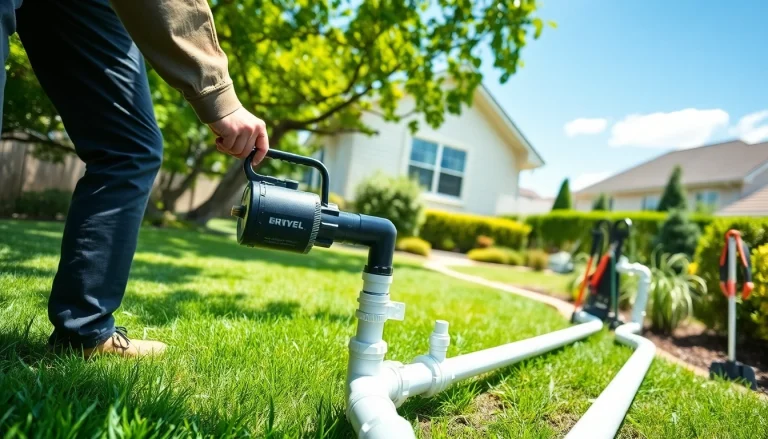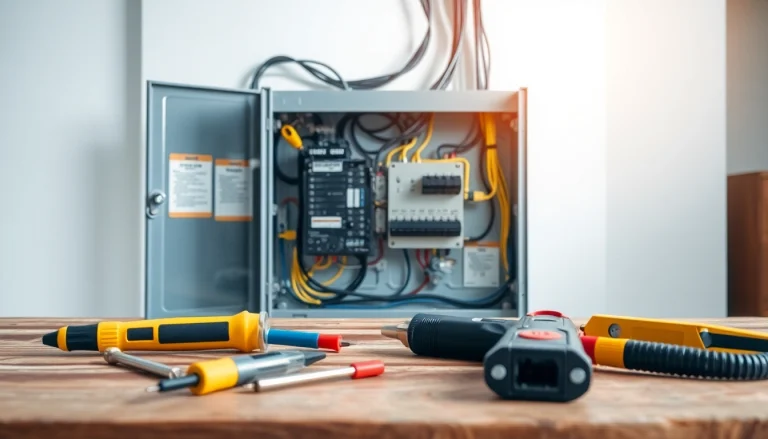Introduction to Automatic Bioethanol Fireplaces
As home heating solutions evolve, the demand for stylish, efficient, and environmentally friendly options has soared. Among the standout solutions in this niche is the automatic bioethanol fireplace, which combines modern technology with the warmth and ambiance of traditional fireplaces. These innovative systems not only enhance the aesthetic appeal of living spaces but also offer various benefits that outshine conventional wood or gas-burning counterparts.
What is an Automatic Bioethanol Fireplace?
Automatic bioethanol fireplaces utilize bioethanol fuel derived from fermented plant material, providing a clean and renewable alternative to fossil fuels. These units come equipped with smart technology that allows users to control ignition, flame height, and overall operation with a remote control, smartphone app, or even smart home systems like Alexa and Google Home. An automatic bioethanol fireplace usually integrates several advanced features, including safety sensors, programmable timers, and fuel refilling systems, making them incredibly user-friendly and efficient.
Advantages over Traditional Fireplaces
- Clean Emissions: Unlike traditional fireplaces, bioethanol fireplaces burn clean with little to no soot, ash, or toxic fumes, making them suitable for indoor use without requiring complex venting systems.
- Convenience: The automatic control features mean you can start and manage your fire with the touch of a button, eliminating the need for manual ignition or logs.
- Energy Efficiency: Bioethanol fireplaces convert nearly all of their fuel into usable heat, providing effective thermal output while minimizing wastage.
- Aesthetics: Available in various designs and configurations, these fireplaces can fit seamlessly into any modern or classic decor, adding to the overall ambiance of the space.
- Pleasant Heat: With the absence of ashes and soot, your home remains clean, and the heat offers a cozy feel akin to traditional fireplaces.
Understanding Bioethanol Fuel
Bioethanol fuel, the lifeblood of automatic bioethanol fireplaces, is made from renewable sources such as sugarcane, corn, and other biomass. This eco-friendly fuel is not only composed of organic materials, but it also generates a pure, bright flame that produces carbon dioxide and water vapor when burned, with no lingering odors or harmful pollutants. As an added benefit, bioethanol is easily available and often competitively priced compared to traditional fuels.
How Automatic Bioethanol Fireplaces Work
Technical Components of an Automatic System
Understanding the technical components of an automatic bioethanol fireplace is crucial for appreciating its effectiveness. Here are the essential parts:
- Fuel Reservoir: A well-designed, insulated tank stores the bioethanol fuel safely, preventing spills and leaks.
- Ignition System: Automatic ignitions use electrical sparks or other means to start the fire safely—this system is often remote-controlled.
- Safety Sensors: Advanced models contain sensors that detect irregularities, such as excess temperature or flame extinction, triggering automatic shutdowns to prevent hazards.
- Control Interface: Typically a touch panel or smartphone app, this interface provides users the ability to manage the fireplace from a distance.
- Flame Adjustment Mechanism: Many models allow for flame height adjustments, enhancing user control and customization based on preference and ambiance needs.
Safety Features and Certifications
Safety is paramount when dealing with fire. Automatic bioethanol fireplaces come with various safety features such as:
- Automatic shutdown upon detecting a rise in temperature or any irregularity in flame behavior.
- Flame extinguishing systems that activate in case of malfunction.
- Safety certifications from relevant bodies, ensuring that devices are tested for both operational safety and efficiency.
- Child lock mechanisms on controls to prevent accidental use by children or pets.
Installation Requirements and Considerations
Installing an automatic bioethanol fireplace can generally be done without the need for extensive modifications to your home. Here are key points to consider:
- Location: Choose a well-ventilated area, ensuring that the fireplace is not too close to flammable materials.
- Surface Stability: The fireplace must be installed on a stable, non-flammable surface, capable of handling the weight of the unit and the fuel reservoir.
- Access to Power: Most automatic models need electrical power for ignition and control systems, so proximity to an outlet is crucial.
- Compliance with Local Regulations: Always check local building codes and regulations regarding the installation of any heating appliance to ensure compliance.
Choosing the Right Automatic Bioethanol Fireplace
Factors to Consider When Buying
With numerous options on the market, selecting the right automatic bioethanol fireplace can be overwhelming. Here are important factors to assess:
- Size: Make sure the fireplace fits your space—measure the area where you plan to install it to avoid overcrowding.
- Design: Whether modern or rustic, select a style that complements your interior design.
- Fuel Efficiency: Look for models that maximize heat output relative to fuel consumption, ensuring lower running costs.
- Brand Reputation: Research companies with proven records of quality and customer service to ensure you are investing wisely.
- Warranty and Support: Opt for products that come with generous warranties and responsive customer service for future troubleshooting needs.
Top Brands and Products in the Market
Brands such as Ignis, Planika, and AFIRE have garnered significant attention in the bioethanol fireplace market. Each offers a suite of products characterized by reliability and innovation.
- Ignis Products: Known for their advanced designs and smart technology integration, Ignis bioethanol fireplaces include options that are remote controllable and compatible with smart home systems.
- Planika Fires: Planika emphasizes elegance and safety, with models featuring sleek designs and precise control mechanisms.
- AFIRE: Popular for their wide range of customizable bioethanol burners that blend seamlessly with existing furniture and architecture.
Comparing Prices and Models
Pricing for automatic bioethanol fireplaces can vary widely, reflecting features, size, and design complexity. Basic models may start at around $500, while more sophisticated options with enhanced technology and design can reach upwards of $2,500. Here are thumb rules for budgeting:
- On average, basic units cost between $500 – $1,000, while mid-range options are priced between $1,000 – $1,800.
- Premium models designed for custom home installations can go beyond $2,000.
- Factors such as warranty length, brand reputation, and customer reviews also play critical roles in determining overall value.
Installation and Maintenance
Step-by-Step Installation Guide
Installing an automatic bioethanol fireplace can usually be done in a few simple steps. Here’s a general guide:
- Choose the Location: Select a spot that is away from flammable materials and ensures easy access to an electrical outlet.
- Prepare the Area: Clear any obstructions, ensuring the surface is clean and stable for the fireplace unit.
- Install the Unit: Follow the manufacturer’s instructions for setting up the fireplace, including securing it as necessary.
- Connect to Power: Plug the fireplace into a designated electrical outlet, ensuring it is grounded.
- Refill the Fuel Reservoir: Fill the bioethanol tank using a funnel to prevent spills, taking care not to overfill.
- Test the Features: Before full operation, test the remote control and any integrated smart technology for proper functionality.
Regular Maintenance Tips for Longevity
To maximize the life of your automatic bioethanol fireplace, regular maintenance is essential. Here are some tips:
- Clean Regularly: Wipe the surfaces of the fireplace to remove dust and soot after each use.
- Check Fuel Level: Regularly monitor the bioethanol fuel level and refill as necessary.
- Inspect Components: Periodically check the ignition system and safety sensors to ensure they are functioning correctly.
- Store Fuel Properly: Keep bioethanol fuel in a safe, cool, and dry place, away from sunlight or heat sources.
- Follow Manufacturer’s Guidelines: Adhere to specific maintenance recommendations provided by the manufacturer in your user manual.
Common Issues and Troubleshooting
Occasionally, issues may arise with automatic bioethanol fireplaces. Here’s a brief troubleshooting guide:
- Flame Not Igniting: Ensure proper fuel level, check the ignition system, and confirm the unit is plugged in.
- Flame Height Inconsistent: Inspect for any blockages in the burner or adjust the flame control settings.
- Odors During Use: Ensure that the fuel being used is of high quality and free from additives.
- Unit Frequently Shuts Down: Investigate whether the safety sensors are erroneously detecting heat or if there’s a malfunction requiring professional assistance.
Maximizing Your Experience with an Automatic Bioethanol Fireplace
Creating the Perfect Ambiance at Home
To truly enjoy your automatic bioethanol fireplace, creating a harmonious ambiance is key. Here are ways to enhance the warmth and comfort of your space:
- Lighting: Combine soft ambient lighting and candles with your fireplace to create a cozy atmosphere.
- Furniture Arrangement: Position seating around the fireplace, inviting relaxation and conversation in a welcoming setup.
- Seasonal Decor: Use seasonal decorations around the fireplace space to enhance the overall aesthetic appeal throughout the year.
Innovative Accessories to Enhance Your Fireplace
Consider adding accessories that complement and elevate your fireplace experience:
- Fireplace Grates: Decorative grates add a stylish touch and can help shield the flame.
- Glass Shields: These protect against drafts and provide safety while remaining elegant.
- Custom Mantels: Tailored mantels can elevate the overall design and create a centerpiece in your living space.
Environmental Impact and Sustainability Considerations
One of the most significant advantages of automatic bioethanol fireplaces is their reduced environmental impact. Bioethanol fuel is renewable and sustainable, as it is produced from plant materials that can be re-grown. Here are some sustainability factors:
- Reduced Carbon Footprint: Burning bioethanol releases only the equivalent amount of CO2 that the plants absorbed during their growth, creating a closed carbon cycle.
- Resource Efficiency: The materials used in manufacturing bioethanol fireplaces, as well as the fuel itself, typically require less energy compared to fossil fuels.
- Promotion of Renewable Energy: By choosing bioethanol, users support renewable energy sources that contribute positively to the environment and reduce dependence on fossil fuels.








